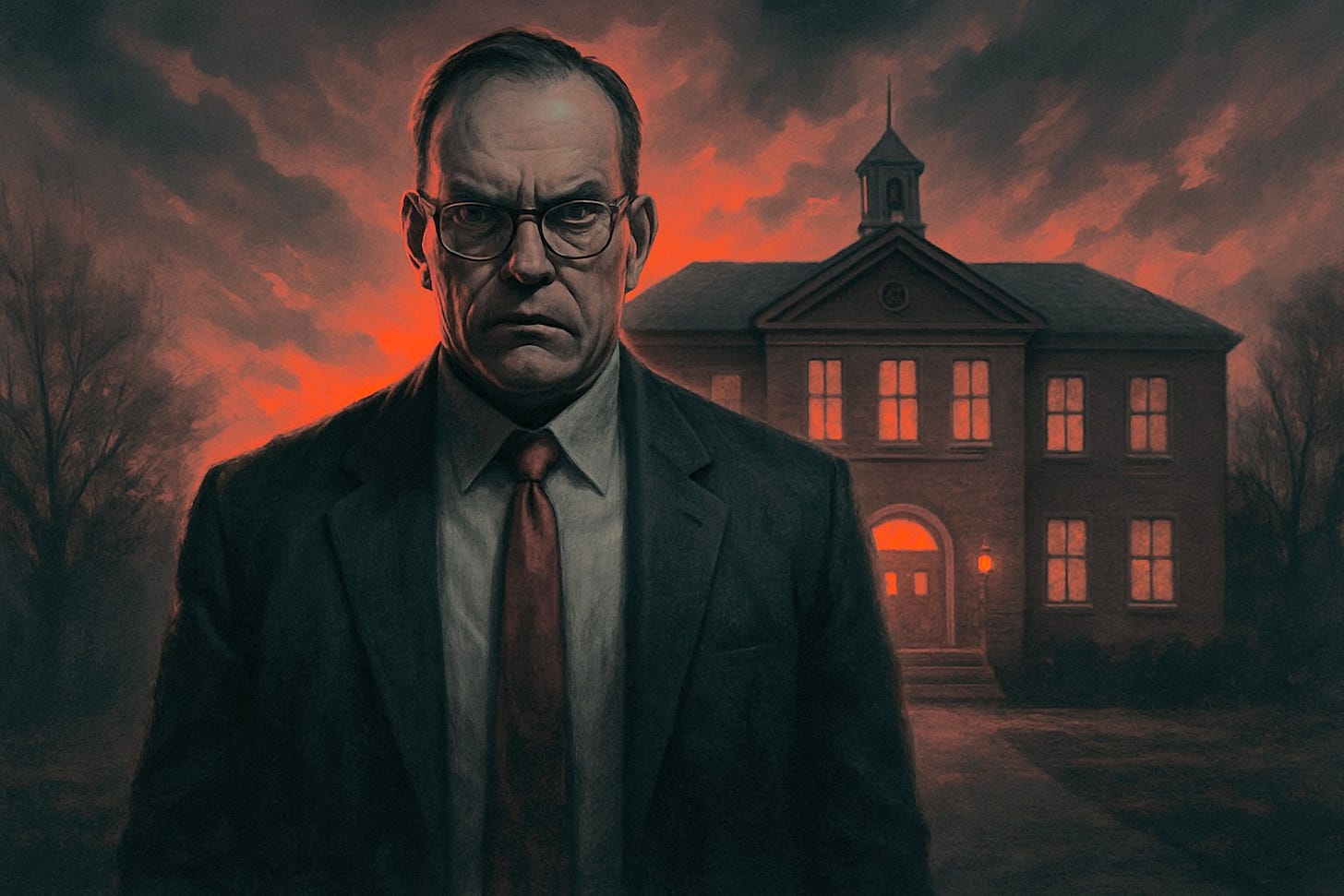The Principal Thing
Where bullies gather, the demon always comes. A short story.
In the beginning, it was just a boy.
Arnold wasn’t especially large or clever. But he was mean, and for a while, that was enough. He pushed, stole, tripped kids in the halls. His jokes were cruel, and they always landed. He smelled fear, and he knew how to use it. The teachers didn’t stop him, not really. Most of the other kids just wanted to survive. So…
Keep reading with a 7-day free trial
Subscribe to TheRobArcher.com to keep reading this post and get 7 days of free access to the full post archives.



